Search Results for 'Colonel'
48 results found.
The songs in Ballinrobe fall mainly on the stage
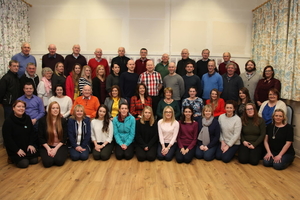
Twenty five years since they last preformed My Fair Lady, Ballinrobe Musical Society will be bringing this classic back to the stage.
Mountbellew to host conference on The Fenians and Manchester Martyrs

In September 1867, 50 Fenians attacked a prison van at Hyde Road, Manchester, intent on releasing their comrades Thomas Joseph Kelly, a Galwegian, and Timothy Deasy. An unarmed police sergeant, Charles Brett was shot dead and 26 men were tried for partaking in the attack.
Inspiring you in real life to make life simply inspiring
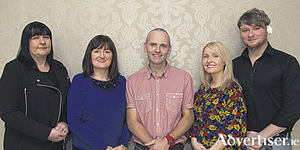
InspiringYouIRL (IYIRL) was created by a group of like minded friends who have backgrounds in teaching, film, media, charity projects, PR and parenting The team at IYIRL believe that social media can consume the idealism, empathy, and natural enthusiasm young people enjoy. Inspiring You is a nonjudgmental platform where positive like-minded learners and thinkers can engage and cultivate their interests and bring them to a wider audience in real life.
Madden’s Nurseries
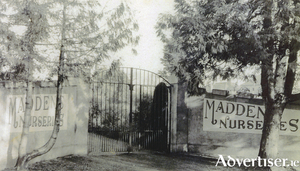
Michael Madden came to Taylor’s Hill from the Ballinasloe area c1898. His family had been in the nursery business there since the 1830s, and in Laurencetown before that again. He leased the land in Taylor’s Hill from Colonel Courtney. In 1902, his brother James and his wife Elizabeth came to live there also, and a few years later, on Michael’s death, they took over the running of the nurseries.
Madden’s Nurseries
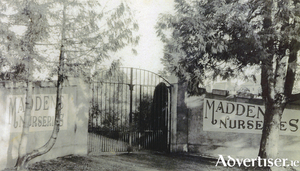
Michael Madden came to Taylor’s Hill from the Ballinasloe area c1898. His family had been in the nursery business there since the 1830s, and in Laurencetown before that again. He leased the land in Taylor’s Hill from Colonel Courtney. In 1902, his brother James and his wife Elizabeth came to live there also, and a few years later, on Michael’s death, they took over the running of the nurseries.
A sheriff once roamed these here parts
The High Sheriff of Mayo was the British Crown’s representative in the county from the post’s creation in 1583 until the establishment of the Irish Free State in 1922. In a country where ownership of land carried huge prestige, the landed had to protect what they held by securing positions of power. So it was in County Mayo that the dominant families of Browne, Bingham and Gore isolated the role of High Sheriff largely for themselves up until the 19th century at least, from which time family names such as O’Donel, Knox, Blake and others appear in the records as holders of the office.
St Anne’s Orphanage
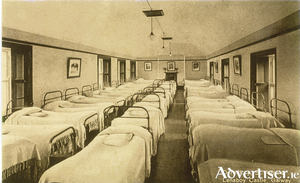
St Anne’s was situated in Lenaboy Castle on Taylor’s Hill. The old part of that building dates from the early 18th century. The house, which was situated on 63 acres of land, belonged to Colonel James O’Hara who was, in 1885, chairman of the town commissioners, and who founded a number of Galway industries. A lane led from the house to the gate of the estate which was beside where the Warwick Hotel is today.
The diving tower at Blackrock
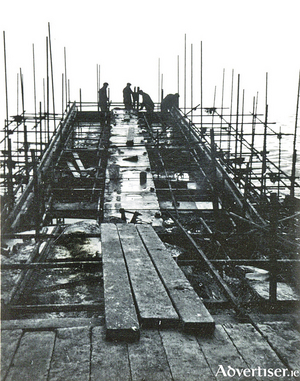
The warm summer of 1885 encouraged Mr. Moon and his friends to place a springboard at Blackrock where there is a tidal range of 17’3”. This did not please the landlord Col. O’Hara who made life difficult for the bathers, often denying them access to the bathing area.
Gentian Hill
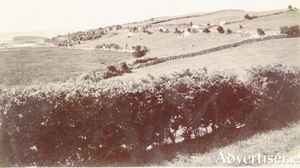
The correct name for this promontory is Blake’s Hill which comprises approximately 30 acres. Gentian Hill was a much smaller area further north, but nowadays the whole area is referred to as Gentian Hill. An extract from O’Donovan’s Letters described it as follows: “Here in Blake’s Hill over the sea, whither the young men of Galway were wont to come on horseback on the third day of their May game, and there dine between the hill and the castle of Barna. Sir Moragh O’Flaherty of Aughamore defeated an army out of Clanricard on the 22nd of June 1564 on the strand at Traybane, Cnoc an Blacaigh.”
1916 belongs to every Mayo town and village
The nationalist Irish Volunteers were established in November 1913 as a response to the formation of the unionist Ulster Volunteers in 1912. Members of the Provisional Committee of the Irish Volunteers selected areas around the country which they would visit with the aim of setting up Volunteer companies. Committee member Colonel Maurice Moore of Moorehall in Carnacon outside Castlebar chose to return to his home county to organise and mentor the men of Mayo. Moore had military experience since the 1870s with the Connaught Rangers and was well respected by both traditions.

